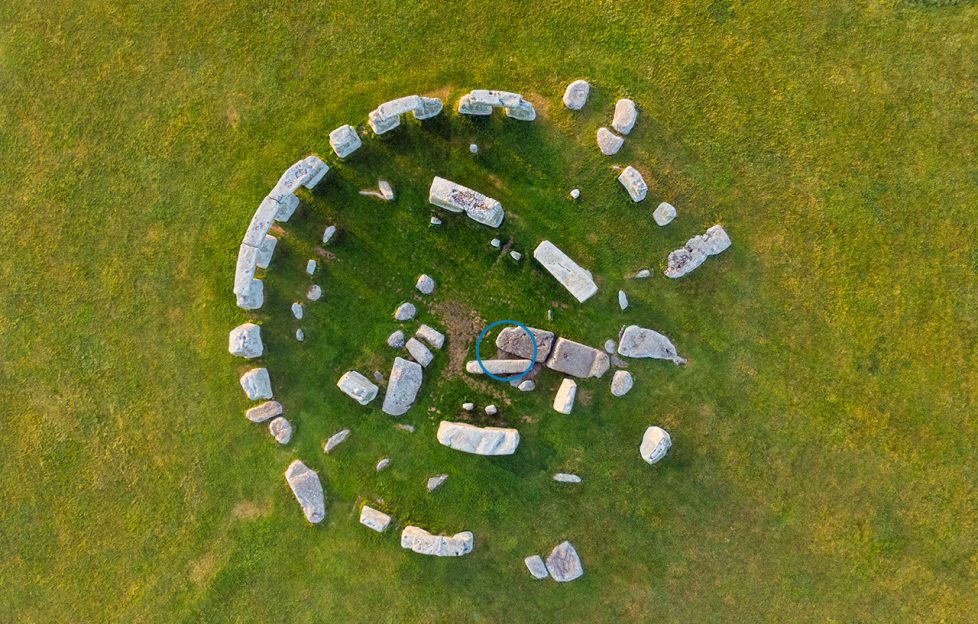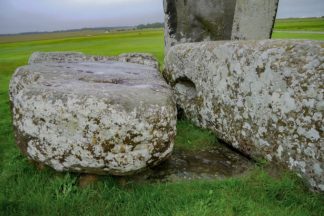Scientists Discover That The Stonehenge Altar Stone Is From Scotland Not Wales

Recent analysis of the Altar Stone at the centre of Stonehenge has traced its origin back to the north of Scotland.
According to a shocking new study carried out by researchers at Curtin University in Perth, Australia, the six-tonne Altar Stone at the heart of Stonehenge originates from the far north of Scotland instead of south-west Wales.
A geochemical analysis of ‘Stone 80’ traced it back to a northern rock basin in Scotland some 4,500 years ago. This partially buried slab of sandstone is difficult to see in photographs as it lies under some other central stones.
In order to move the stone from Scotland to Stonehenge in Wiltshire, England, it would have been transported about 700km (434 miles) during the Neolithic period.
This has baffled scientists!

The partially buried Stonehenge Alter Stone is often obscured from view. Image: Nick Pearce/Aberystwyth University.
This Scottish link to the Stonehenge Alter Stone has potentially rewritten Neolithic history textbooks
Whether the Stonehenge Alter Stone was moved by land or by sea is now open for debate. Both options would have come with their own set of challenges and pose different questions of practicality.
Until now, it has been widely believed that a seaworthy craft capable of such a journey would not have existed in Neolithic Britain. However, a number of scientists believe there would have been no other way to move such a large stone across such a long distance.
Researchers are now rethinking how technologically advanced our Neolithic ancestors actually were. This discovery has the potential to change key aspects in our understanding of life in prehistoric Britain.
And why was a stone from Scotland so essential?
The concept of stone circles was first developed in Orkney and thrived there for centuries before Stonehenge was completed.
Perhaps this was why an Alter Stone from Scotland was a non-negotiable centrepiece for Stonehenge.
It’s already known that about 30 sarsens within Stonehenge came from Marlborough Downs. The other 80 bluestones are thought to be from the Mynydd Preseli mountains in western Wales.
The Stonehenge Altar Stone is the largest of the bluestones, measuring 5 metres by 1 metre. It was previously thought to be from the same area of Wales, but the latest composition data proves that it can only be from Scotland.
This latest study uses dating and chemical analysis of tiny zircon, rutile and apatite crystals from the Altar Stone. The results matched its source to the Old Red Sandstone formations in the Orcadian Basin. This is located in the northeast of Scotland and Orkney.
Data like this is is no match for any composition found in England or Wales, so there is no doubt in the researchers’ minds that the Stonehenge Altar Stone originates from Scotland.





